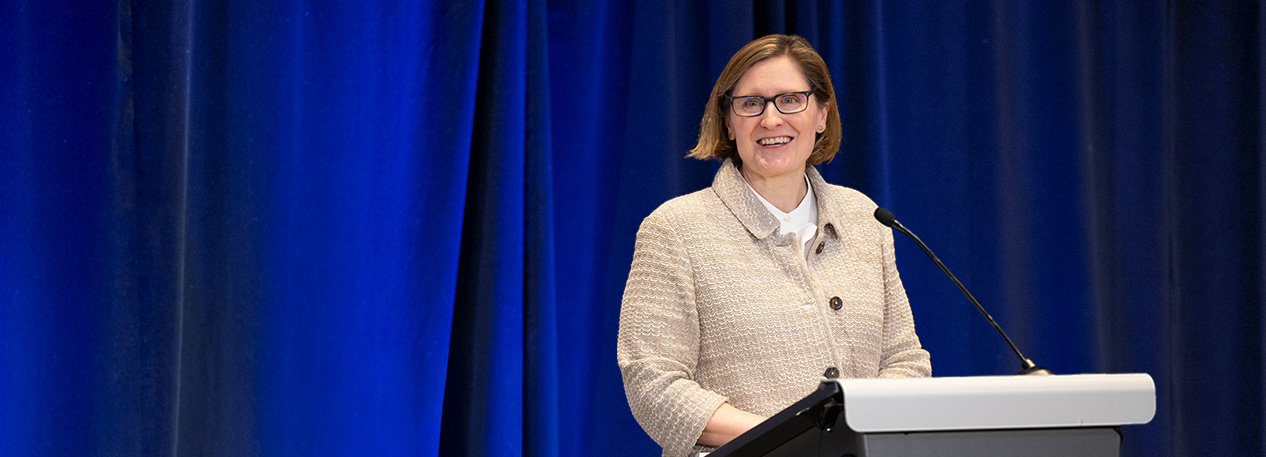For immediate release
Contact: Daneil Mazone, Media Relations
Philadelphia, PA – Speaking at the National Association for Business Economics 67th Annual Meeting, Federal Reserve Bank of Philadelphia President and CEO Anna Paulson stated that “tariffs will increase the price level, but they won’t leave a lasting imprint on inflation.” Paulson added that “monetary policy should look through tariff effects on prices.”
Paulson stressed that she reached “this conclusion with an awareness that we need to be careful,” and stated that she will make policy decisions “cautiously.”
Paulson’s prepared remarks represent her first economic outlook since becoming President & CEO of the Philadelphia Fed on July 1, 2025.
Paulson cited a number of factors contributing to her views on tariffs and inflation, including anchored inflation expectations, smaller than expected price increases from tariffs, and firms not passing on increased costs to consumers in order to maintain market share.
In her remarks, Paulson stated, “Given my views on tariffs and inflation, monetary policy should be focused on balancing risks to maximum employment and price stability which means moving policy to a more neutral stance.”
Paulson said that the Federal Open Market Committee’s decision to cut rates by 25 basis points in September “made sense” against the backdrop of increasing labor market risks. For the remainder of 2025, Paulson views “easing along the lines of the median SEP policy path as appropriate,” if economic and financial conditions evolve as she expects.
Looking ahead to 2026, Paulson sees “growth near potential, and inflation rising and then subsiding as tariffs, together with current and past monetary policy restrictiveness, work their way through.” Paulson added, “If the economy evolves as I expect, the monetary policy adjustments we make this year and next will be sufficient to keep labor market conditions close to full employment.”
About the Federal Reserve Bank of Philadelphia
The Federal Reserve Bank of Philadelphia helps formulate and implement monetary policy; supervises state member banks, bank holding companies, and savings and loan holding companies; and provides financial services to depository institutions and the federal government. It is one of the 12 regional Reserve Banks that, together with the Board of Governors in Washington, D.C., make up the Federal Reserve System. The Federal Reserve Bank of Philadelphia serves eastern and central Pennsylvania, southern New Jersey, and Delaware.
